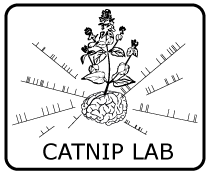Neutral Theory and Scale-Free Neural Dynamics (2017)
Matteo Martinello, Jorge Hidalgo, Amos Maritan, Serena di Santo, Dietmar Plenz, Miguel A. Munoz. Physical Review X (2017) (Physical Review X) (local cache)
Abstract
Neural tissues have been consistently observed to be spontaneously active and to generate highly variable (scale-free distributed) outbursts of activity in vivo and in vitro. Understanding whether these heterogeneous patterns of activity stem from the underlying neural dynamics operating at the edge of a phase transition is a fascinating possibility, as criticality has been argued to entail many possible important functional advantages in biological computing systems. Here, we employ a well-accepted model for neural dynamics to elucidate an alternative scenario in which diverse neuronal avalanches, obeying scaling, can coexist simultaneously, even if the network operates in a regime far from the edge of any phase transition. We show that perturbations to the system state unfold dynamically according to a “neutral drift” (i.e., guided only by stochasticity) with respect to the background of endogenous spontaneous activity, and that such a neutral dynamics–akin to neutral theories of population genetics and of biogeography–implies marginal propagation of perturbations and scale-free distributed causal avalanches. We argue that causal information, not easily accessible to experiments, is essential to elucidate the nature and statistics of neural avalanches, and that neutral dynamics is likely to play an important role in the cortex functioning. We discuss the implications of these findings to design new empirical approaches to shed further light on how the brain processes and stores information.
